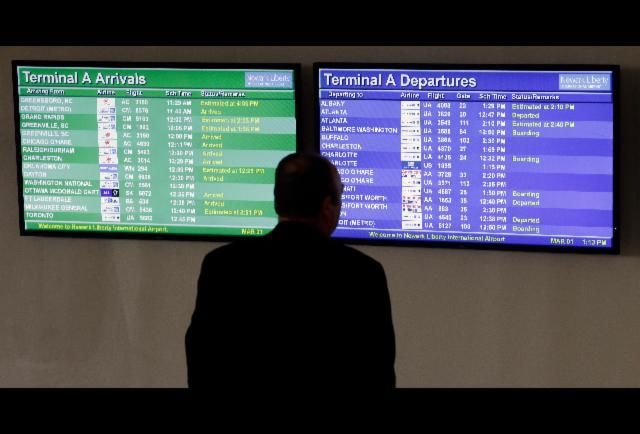Understanding per diem for businesses: definition, rates, and benefits
Per diem, a daily allowance provided by businesses to employees on work-related trips, covers expenses such as meals, lodging, and other incidentals. The key advantage of per diem is its simplification of the expense reimbursement process. Instead of submitting detailed receipts for every expense, employees receive a fixed amount, streamlining the administrative burden.
Per diem meaning
“Per diem,” meaning “by the day” in Latin, refers to a daily allowance provided to employees to cover essential expenses incurred while on a business trip. Typically, these covered expenses include accommodation, meals, and various incidental costs, such as service fees and gratuities.
Per diem rates help streamline expense reporting, offering a straightforward daily rate rather than requiring itemized receipts and detailed reports for each expenditure.
In addition to travel allowances, “per diem” can also refer to a pay structure where an employee is compensated for each day worked, rather than through a fixed weekly or monthly salary. This payment approach is common for contract or temporary roles where work schedules may vary.
Many companies and employees prefer the simplicity of a flat per diem rate, as it reduces administrative overhead, allowing employees to focus on their work without the burden of compiling and submitting detailed expense reports.

How does per diem work?
Per diem is a daily allowance provided to employees on business trips to cover expenses without requiring detailed receipts for each cost. This reimbursement method simplifies travel expenses by providing a fixed daily rate that covers meals, lodging, and incidental costs, letting employees focus on work instead of itemizing every expense.
To calculate per diem, simply multiply the daily rate by the number of days on the trip. For instance, if an employee is on a three-day business trip with a per diem rate of $150, the total per diem reimbursement would be $450 (3 days x $150). This straightforward approach to per diem, meaning “per day” in Latin, keeps expense tracking simple and efficient for both the employee and the employer.
What expenses does per diem cover?
Per diem allowances are designed to cover essential expenses incurred during business travel. These expenses typically include daily costs for meals, lodging, and other incidentals that employees may encounter. The purpose is to simplify the reimbursement process and ensure employees can manage travel-related expenses without financial strain.
Meals and incidentals
Per diem includes an allocation for daily meals and incidental expenses, such as tips, local transportation, and minor personal expenses. This allowance helps employees manage their daily needs while travelling without paying out-of-pocket. By providing a set amount, businesses simplify expense reporting and avoid the administrative burden of reviewing numerous receipts.
Lodging
The lodging component of per diem covers accommodation expenses. Employees can choose their lodging based on the allocated budget, offering flexibility while maintaining cost control. This predetermined rate for lodging helps businesses plan and manage travel expenses efficiently, ensuring that the cost does not exceed the set budget. Additionally, it eliminates the need for detailed accommodation receipts, further simplifying the reimbursement process.
Setting per diem rates
Setting per diem rates involves considering several factors to determine the appropriate daily allowance for employees. These factors include the destination’s cost of living, the nature and duration of the trip, and company-specific policies. Establishing clear and fair per diem rates is crucial for both budgeting purposes and maintaining employee satisfaction.

What factors influence per diem rates?
Per diem rates are determined by various factors, primarily the location of the business trip. Major cities or international destinations often have higher rates due to the increased cost of living. The duration of the stay also plays a role; longer trips may have different rates or caps on certain expenses. Additionally, company policies and the employee’s position within the organization can influence the per diem amount, with higher allowances for senior executives or trips with specific business purposes.
How do companies establish per diem guidelines?
Companies typically establish per diem guidelines by referencing standard rates provided by government agencies or industry benchmarks. These benchmarks offer a baseline for daily allowances, which companies can adjust based on internal policies and budget constraints. The guidelines generally outline maximum allowable expenses for meals, lodging, and incidentals, ensuring employees know what they can spend. Companies may also differentiate rates based on the destination, categorizing locations into tiers to account for varying cost levels.
Tax implications
Per diem payments are generally non-taxable if they do not exceed standard rates and are used for legitimate business expenses. However, exceeding these rates or failing to provide proper documentation can lead to the payments being classified as taxable income, requiring careful adherence to compliance requirements.
What is the tax treatment of per diem?
Per diem allowances are generally non-taxable if they do not exceed the federal or company-approved rates and are used for legitimate business travel expenses. Employees do not need to report these amounts as income, provided they adhere to the company’s documentation requirements. However, if an employee receives per diem payments exceeding the standard rates or fails to provide the necessary documentation, the excess amount may be considered taxable income and must be reported on their tax return.
What are the compliance requirements for businesses?
Businesses must adhere to strict compliance requirements when offering per diem allowances. This includes maintaining accurate records of all travel-related expenses and ensuring that the allowances are within the set rates. Employees must typically submit documentation, such as receipts or travel itineraries, to verify the incurred costs. Companies must also ensure that per diem policies are communicated to employees and that deviations are documented and justified. Proper compliance helps prevent issues with tax authorities and allows the business to substantiate its expense practices.
Advantages of per diem for businesses
Per diem allowances offer several advantages for businesses, including simplified expense management and better budget control. By providing a fixed daily amount for travel expenses, companies can streamline the reimbursement process and avoid the complexities of handling detailed receipts. This system also helps in maintaining consistency and transparency in expense reporting.

How does per diem simplify expense management?
Per diem allowances streamline the expense management process for businesses by providing a predetermined amount to cover travel-related costs. This approach eliminates employees needing to submit detailed receipts for every meal, lodging, or incidental expense. By providing a fixed rate, businesses reduce the administrative burden of processing numerous expense reports, making managing and predicting travel costs easier. This system ensures reimbursement consistency, reducing discrepancies and potential disputes over expense claims.
How does per diem help with budget control?
Per diem provides a transparent and predictable way to budget for travel expenses, allowing businesses to allocate funds more effectively. By setting specific daily rates for meals, lodging, and incidentals, companies can better control travel spending and avoid unexpected costs. This predictability helps in financial planning and prevents overspending. Additionally, employees are encouraged to stay within the allotted amounts, fostering a culture of cost-consciousness and responsibility.
What flexibility does per diem offer to employees?
Per diem allowances allow employees to choose how they spend their daily allotment. Whether selecting accommodations or dining options, employees can make decisions based on their preferences and needs within the provided budget. This flexibility can enhance employee satisfaction and comfort during business trips, as they can opt for arrangements that best suit their schedules and tastes. Moreover, it simplifies the reimbursement process for employees, as they don’t need to track and justify every expense.
Potential challenges
While per diem allowances provide many benefits, they also present potential challenges, such as the risk of misuse or abuse. Without proper monitoring and clear policies, employees may overspend or inaccurately report expenses. It is important for businesses to implement strong policy enforcement and regular audits to mitigate these risks.
What are the risks of misuse and abuse?
If not properly monitored, per diem allowances can be subject to misuse and abuse. Employees may overspend or claim more than necessary, especially if they are not required to provide receipts. This can lead to inflated travel costs and financial strain on the company. Additionally, with clear guidelines and enforcement, there may be consistency in how per diem is applied, potentially leading to disputes or perceptions of unfairness among employees.
How can companies ensure policy enforcement?
Companies should implement clear and comprehensive per diem policies to mitigate the risks of misuse. These policies should include specific guidelines on allowable expenses, maximum rates, and required documentation. Regular audits and reviews of expense reports can help ensure compliance and identify any patterns of abuse. Companies may also use technology solutions like expense management software to track and manage per diem payments, ensuring transparency and accountability. Training employees on the proper use of per diem and the importance of adhering to company policies is also crucial in maintaining a fair and effective system.
Best practices for implementing per diem
To effectively implement per diem allowances, companies should develop comprehensive policies that clearly outline allowable expenses and documentation requirements. Regular monitoring and auditing play a critical role in ensuring compliance and preventing misuse. Additionally, educating employees about the proper use of per diem can help maintain a fair and efficient system.

How can companies develop effective per diem policies?
Developing effective per diem policies involves setting clear guidelines that specify the maximum allowable rates for meals, lodging, and incidentals. These policies should be based on industry benchmarks or government standards and adjusted for company-specific factors such as budget constraints and typical travel destinations. The policies should also outline the documentation required from employees, such as receipts or travel itineraries, to ensure transparency and accountability. It’s essential to communicate these policies clearly to all employees and provide training on their proper use.
What role do monitoring and auditing play?
Monitoring and auditing are crucial for ensuring compliance with per diem policies and preventing misuse. Regular audits of expense reports can help identify discrepancies or patterns of abuse, allowing companies to address issues promptly. The use of expense management software can streamline this process, providing a transparent and easily accessible record of all transactions and making it easier for employees and management to review and manage expenses.
How is per diem calculated?
Calculating per diem involves determining the daily rates for lodging, meals, and incidental expenses based on the travel destination. Companies may use standard rates provided by government agencies or set their own rates based on average expenses in the destination area.
Determining the per diem rate
Per diem rates are typically determined by the travel location, reflecting the local cost of living. Companies may use standard rates from government agencies or set their own based on the average expenses in the destination area. The total per diem amount usually includes separate allowances for meals and lodging.
Applying the per diem
To calculate the total per diem, multiply the daily rate by the number of travel days. Companies often provide a reduced rate for partial days, such as arrival or departure days, ensuring fair compensation while controlling costs.
Per diem rates for 2024
The per diem rates 2024 have been set to ensure that employees are adequately compensated for their travel expenses. These rates, determined by the General Services Administration (GSA), include standard rates for most locations within the continental United States and higher rates for designated non-standard areas (NSAs) where the cost of living is higher. Understanding these rates helps businesses plan and manage their travel expenses effectively.
Standard rates
For the fiscal year 2024, the General Services Administration (GSA) has set the standard per diem rate for most continental United States (CONUS) locations at $166 per day. This includes $107 for lodging and $59 for meals and incidental expenses (M&IE). These rates reimburse federal employees for subsistence expenses incurred while on official travel.
Non-standard areas (NSAs)
There are 302 designated NSAs with higher per diem rates due to the increased cost of living in those areas. For instance, the lodging rate can be adjusted upwards based on the average daily rate (ADR) of hotels in those areas, ensuring that allowances cover reasonable accommodation costs.
Specific changes and highlights
- The standard lodging rate has increased from $98 to $107.
- The M&IE rate remains unchanged, with tiers ranging from $59 to $79, depending on the location.
- Several new NSAs have been added, including Huntsville, AL, and Charles Town, WV.
These rates help businesses and government agencies plan and manage travel expenses, providing clear guidelines on reimbursable amounts for employees on business trips.
FAQs on per diem
What does “give per diem” mean?
“Give per diem” refers to providing a daily allowance to employees to cover expenses incurred during business travel. This allowance typically includes meals, lodging, and other incidental costs. The term “per diem” is Latin for “per day,” highlighting the daily nature of the allowance.
What is per diem in the UK?
In the UK, per diem allowances are often called “subsistence allowances.” These are daily payments made to employees to cover expenses like meals and accommodation when travelling for work. The rates can vary based on the location and duration of the trip, and the allowance is typically only considered taxable income if it is within certain limits set by HMRC (Her Majesty’s Revenue and Customs).
How is per diem calculated?
Per diem is calculated by setting daily rates for lodging and meals/incidental expenses based on the travel destination. These rates are determined using standard benchmarks, such as government or industry standards. The total per diem amount is multiplied by the daily rate and the number of travel days. A reduced rate (often 75% of the total rate) may be applied for partial days.
What is the meaning of per diem in English?
In English, “per diem” means “per day.” It is commonly used in business and employment contexts to refer to a daily allowance given to employees to cover travel-related expenses. This term is used to simplify expense management and ensure that employees are compensated fairly for their costs while travelling for work.
What is a per diem example?
An example of per diem could involve an employee travelling for a business conference. If the company’s per diem policy sets a rate of £100 per day for lodging and £50 per day for meals and incidentals, the employee would receive a total of £150 per day to cover these expenses. This amount is provided upfront, allowing employees to manage their travel budget without submitting detailed receipts for each expenditure. This method simplifies the reimbursement process and offers financial clarity for the employee and the employer.


